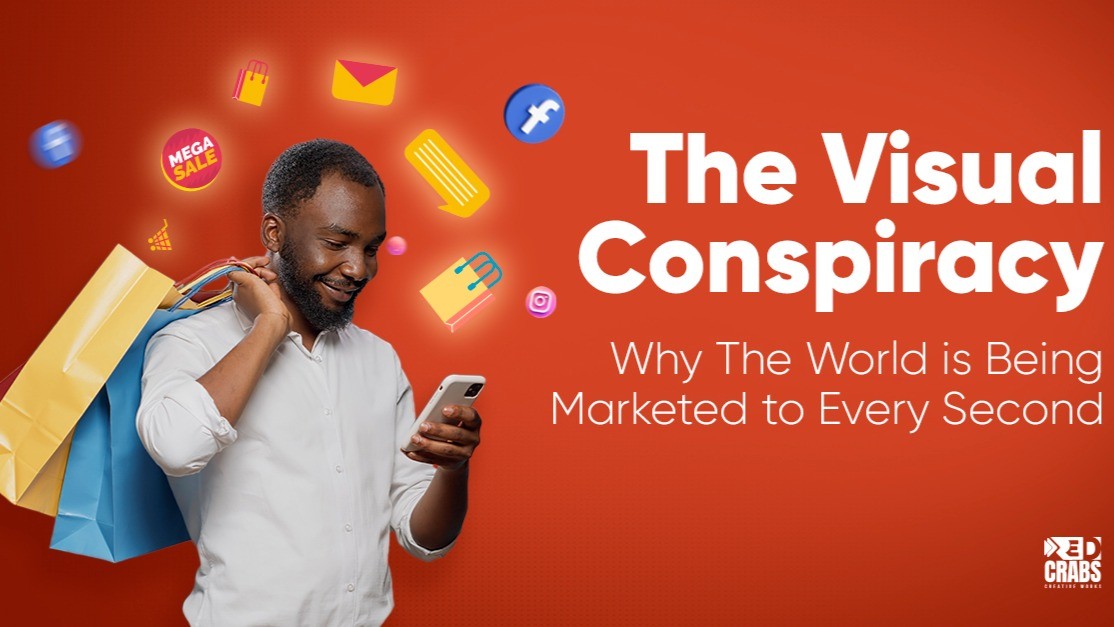You Think You're Making Choices—But Are You?
Every time you walk into a grocery store with a simple shopping list—just milk and bread. But somehow, you walk out with a premium chocolate bar, a fancy drink, and a new brand of chips you've never tried before. Sound familiar?
This isn't just a random splurge. It's a well-crafted marketing strategy. Everything you see—from product placement on store shelves to the Instagram ad you scrolled past this morning—is designed to make you buy. Whether it’s the golden arches of McDonald's triggering your craving for fries or Apple’s sleek, minimalist design exuding luxury, you’re being marketed to every second of the day.
The real question is: Are you aware of it?
The Algorithmic Manipulation: How Tech Giants Control What You Buy
Ever wondered why that same pair of shoes keeps following you across Instagram, Facebook, and even random websites? That’s not magic—it’s algorithms in action.
🔹 Meta's internal documents (2023) revealed that their algorithms predict user purchases with 82% accuracy—just based on visual engagement.
🔹 Netflix decides 80% of what people watch based on their previous viewing habits.
🔹 Amazon’s recommendation engine drives 35% of its total sales.
These companies track everything—what you search, what you pause on, what you engage with. This isn’t casual browsing; it’s a highly sophisticated, AI-driven operation designed to shape your choices.
In a study by The Wall Street Journal, Facebook was found to track users’ online behavior even if they’ve never clicked on an ad. Psychologist Robert Cialdini calls this “pre-suasion”—shaping consumer perceptions before they even realize they’re making a decision.
The Psychology of Attention: How Your Brain Obeys What It Sees
Visuals are not just about aesthetics—they’re psychological triggers.
🔹 90% of information transmitted to the brain is visual.
🔹 We process images 60,000 times faster than text.
🔹 A Nielsen study found that ads with strong visual storytelling increase brand recall by 55%.
“The average person encounters anywhere between 4,000 to 10,000 ads daily. With 625 ads per hour and nearly 10 ads per minute, marketing is an ever-present force, constantly competing for attention. It’s no surprise that escaping its grip feels nearly impossible.”
Brands exploit this through color psychology, contrast, and repetition. Ever noticed how SALE signs are always red? Red triggers urgency. Luxury brands use black and gold? They convey exclusivity and prestige.
Even Indian brands like Zomato and Flipkart play this game. Zomato’s quirky push notifications mix humor with hunger cues to keep you engaged. Flipkart’s “Big Billion Days” bombard you with countdown timers, making you feel like you’ll miss out if you don’t buy right now.
This isn’t just marketing—it’s psychological conditioning at scale.
From Billboards to Reels: The Evolution of Marketing
Marketing has evolved from newspaper print ads to video-driven content on TikTok, Instagram Reels, and YouTube Shorts. Why? Because our attention spans have shrunk to just 8 seconds (Microsoft study).
Brands have adapted:
✅Apple: Apple's "Shot on iPhone" campaign doesn’t focus on the phone’s specs; it tells emotional stories through stunning user-generated photos and videos.
✅ Nike: Nike's "Just Do It" ads don’t just promote shoes; they inspire people by featuring athletes like Serena Williams and Cristiano Ronaldo, making them feel part of a winning mindset.
✅ Swiggy: Swiggy’s 10-minute delivery campaign doesn’t just highlight speed; it plays on cravings, like "Craving momos? Get them before your show starts!
And let’s not forget the rise of influencer marketing—the new-age billboard.
When Virat Kohli endorses Puma, you don’t just see a shoe. You see aspiration.
Marketing today isn’t about selling—it’s about making you want to buy.
The Only Way to Beat the System: Awareness
So, how do you break free from this constant manipulation?
✔️ Recognize psychological triggers – When an ad makes you feel urgency (“Only 3 left in stock!”), pause. Is it real urgency, or just a tactic?
✔️ Curate your digital space – Your online engagement shapes your algorithm. Consciously interact only with what you truly want to see.
✔️ Be mindful of brand identity influence – Are you buying a product, or are you buying into a lifestyle?
Marketing isn’t inherently bad—it’s just powerful. The key is knowing when it’s shaping your choices so that you make decisions based on your own free will.
Final Thought: The Choice is Yours—Or Is It?
In a world where every color, every placement, and every second of screen time is engineered for persuasion, the ultimate question remains:
Are you choosing—or are you being chosen for?
Stay aware. Stay informed. Because the moment you understand the game, you start playing on your own terms. Visit our website for more - https://redcrabs.in/





Comments